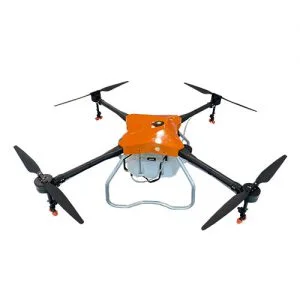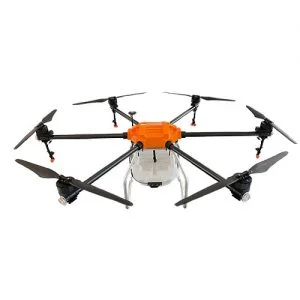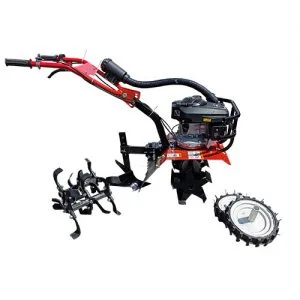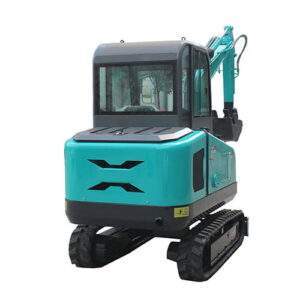Understanding the Environmental Impact of Agricultural Drone Sprayers
Introduction

In recent years, agricultural drone sprayers have emerged as a revolutionary technology in modern farming practices. These unmanned aerial vehicles (UAVs) are equipped with precision spraying mechanisms designed to apply pesticides, fertilizers, or herbicides to crops with unprecedented accuracy and efficiency. This blog aims to delve into the environmental implications of using agricultural drone sprayers, focusing on key factors such as pesticide reduction, soil health preservation, and biodiversity conservation. Understanding these impacts is pivotal as agriculture seeks more sustainable solutions to meet global food demands.
What are Agricultural Drone Sprayers?
Agricultural drone sprayers represent a significant advancement over traditional spraying methods. These UAVs are equipped with specialized spraying equipment capable of precisely targeting specific areas of crops. Unlike conventional sprayers, which often result in over-spray and unintended environmental contamination, drones can apply chemicals in controlled doses directly to the areas that need treatment. This targeted approach not only reduces the amount of chemicals required but also minimizes the impact on surrounding ecosystems and non-target organisms.
Environmental Benefits
- Reduced Chemical Usage: One of the primary environmental benefits of agricultural drone sprayers is the significant reduction in chemical usage. By precisely targeting where pesticides or fertilizers are needed, drones can achieve comparable or improved crop yields with lower quantities of chemicals. This reduction not only minimizes the risk of environmental pollution but also decreases production costs for farmers.
- Precision Application: Precision agriculture facilitated by drone technology allows for the precise application of inputs such as pesticides and fertilizers. This accuracy minimizes the environmental footprint by reducing drift and runoff, which are common issues with traditional spraying methods. By applying chemicals only where necessary, agricultural drone sprayers contribute to improved environmental stewardship and sustainable farming practices.
Environmental Concerns
- Air Quality: While agricultural drone sprayers can reduce overall chemical usage, concerns regarding air quality persist. The emission of particulates or volatile organic compounds (VOCs) from the sprays during application can contribute to localized air pollution. Monitoring and mitigating these emissions are crucial to minimize potential health impacts on farmworkers and nearby communities.
- Impact on Wildlife: Despite the precision of drone sprayers, pesticides can still pose risks to non-target organisms, including beneficial insects, birds, and aquatic life. Implementing buffer zones, using less harmful chemicals, and adopting integrated pest management (IPM) strategies can mitigate these risks. Additionally, ongoing research is necessary to understand the long-term effects of drone spraying on biodiversity and ecosystem health.
Operational Considerations and Benefits

| Aspect | Description |
|---|---|
| Precision Application | Ability to target specific areas of crops with precision, reducing waste and environmental impact. |
| Operational Efficiency | Faster application compared to traditional methods, leading to increased productivity. |
| Remote Sensing Capabilities | Integration of sensors for real-time monitoring of crop health and pest infestations. |
| Flexibility in Terrain and Conditions | Capable of operating in challenging terrain and adverse weather conditions. |
| Safety and Labor Reduction | Reduces exposure of farmworkers to chemicals and decreases labor requirements. |
Conclusion
Agricultural drone sprayers represent a promising technology for modern agriculture, offering substantial environmental benefits through precision application and reduced chemical usage. While these advantages are significant, it is crucial to acknowledge and address potential environmental concerns, such as air quality impacts and effects on wildlife. By integrating technological advancements with sound environmental stewardship practices, we can harness the full potential of agricultural drone sprayers while safeguarding our ecosystems for future generations.
FAQ
Q: How do agricultural drone sprayers differ from traditional spraying methods?
A: Agricultural drone sprayers utilize UAV technology to apply pesticides and fertilizers with pinpoint accuracy, minimizing chemical usage and environmental impact compared to conventional methods.
Q: What are the main environmental concerns associated with drone sprayers?
A: Environmental concerns include potential air quality impacts from spray emissions and risks to non-target wildlife despite precise application.
Q: Are there regulations in place for the use of agricultural drone sprayers?
A: Regulations vary by region, but most jurisdictions have guidelines for pesticide application and UAV operations to mitigate environmental risks.


